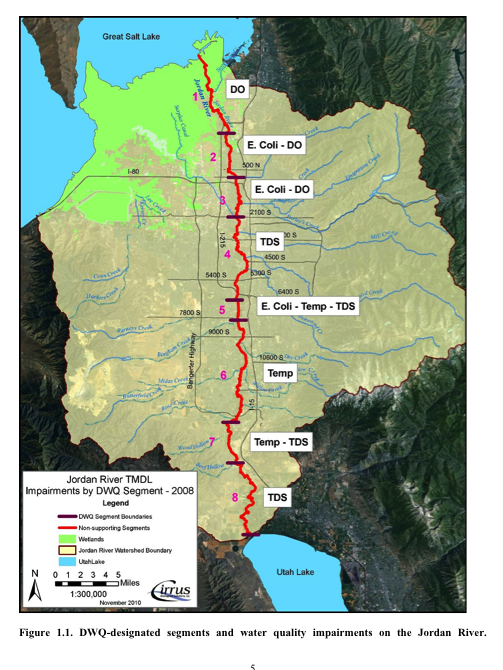
This water quality study for the Jordan River establishes the Total Maximum Daily Load (TMDL) for Total Organic Matter (OM) of 3,983 kg/day that will achieve the model endpoint for Dissolved Oxygen (DO). This target concentration is defined in a water quality model (QUAL2Kw) which is being used as a decision support tool for restoring beneficial use to the lower Jordan River. Additional testing was conducted to quantify uncertainty of input parameters and rates used in the calibrated model. Based on these results and additional information reviewed during the TMDL process, a 1.0 mg/L implicit Margin of Safety (MOS) was added to the Jordan River instantaneous DO standard of 4.5 mg/L. Input concentrations of Total OM that resulted in meeting the model endpoint of 5.5 mg/L DO were used to define permissible loads to the lower Jordan River. This model endpoint and the resulting permissible loads account for levels of uncertainty that exist in the TMDL process at this time and are designed to maintain DO levels in the lower Jordan River above the instantaneous DO standard.
View this complete post...












 RSS Feed
RSS Feed